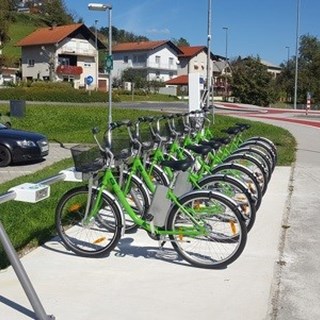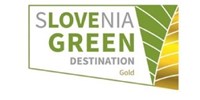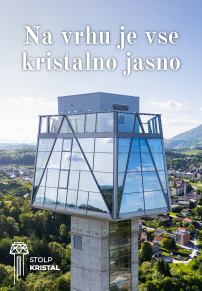- Občina
- Organi občine
-
Občinska uprava
- Uradne ure
- Kontakti
- Katalog informacij javnega značaja
-
Področja dela
-
Oddelek za razvoj in investicije
- Stolp Kristal
- Nadhod Sonce
- Parkirišče P+R
- VR doživetje - let s Pegazom
- Izgradnja oskrbovanih stanovanj v Rogaški Slatini
- Telovadnica pri POŠ Sv. Florijan
- Odvajanje in čiščenje komunalne odpadne vode v porečju Sotle - Občina Rogaška Slatina
- Naravovarstveni center Sotla - Bobrov center
- DRR Rogaška Slatina – Sp. Gabernik
- OK okusi
- Energetska sanacija objektov športna dvorana Janina in POŠ Sveti Florijan
- Oddelek za gospodarstvo
- Oddelek za družbene dejavnosti
- Oddelek za okolje in prostor
- Oddelek za proračun in finance
- Oddelek za splošne in kadrovske zadeve
-
Oddelek za razvoj in investicije
- Inšpektorat in redarstvo
- Civilna zaščita in požarna varnost
- Objave in napovedi
- Vloge in obrazci
-
Lokalno
- Dogodki
- Lokacije defibrilatorjev (AED)
- Prostofer in prevozi starejših
- Taksi služba
- Izposoja koles
- Energetska svetovalna pisarna
- Brezplačne modre cone v Rogaški Slatini
- Invalidom prijazno mesto
- Mestna blagajna
- Šport
-
Kultura
-
Kulturni spomeniki
- Juneževa domačija
- Beograjski dom
- Tržaški dom
- Hotel Pošta
- Stara hidroterapija
- Strossmayerjev dom
- Dom Styria
- Stara direkcija
- Zagrebški dom
- Paviljon Tempel
- Cerkev sv. Marjete
- Cerkev sv. Lenarta
- Cerkev sv. Mohorja in Fortunata
- Cerkev sv. Miklavža
- Cerkev sv. Trojice
- Cerkev sv. Križa
- Kapela sv. Ane
- Cerkev sv. Rozalije
- Cerkev Čenstohovske Matere božje
- Cerkev Loretske Matere božje
- Cerkev sv. Florijana
- Cerkev Marijinega vnebovzetja
- Spominski dom Franceta in Borisa Kidriča
- Kraj pokrajinske konference KPS
- Ješovska gorca
- Hiša Čača vas 43
- Hiša Zagaj pod Bočem 6
- Calska gorca
- Vila Zlatorog
- Območje zdravilišča Rogaška Slatina
- Zdraviliški dom
- Doprsni kip grofa Ferdinanda Attemsa
- Grobišče Čača vas
- Partizanska bolnišnica Drevenik
- Grobišče borcev na Boču
- Grob bratov Simončič
- Grob kurirja Antona Drofenika
- Grobišče na pokopališču
-
Kulturni spomeniki
- Mestna tržnica
- Voda iz pipe
- E mobilnost
Zdraviliško območje leži sredi mesta Rogaška Slatina. Vsebuje osrednji klasicistični zdraviliški trg, zahodno mestno ulico s posamičnimi hoteli, stavbami, vrelci in odprtimi parkovnimi ter gozdnimi površinami na okoliških vzpetinah, funkcionalno povezanimi z zdraviliščem.
Rogaška Slatina je v 19. stoletju veljala za eno najlepših zdravilišč daleč naokoli, zato je imenitne goste privabljala že v svojih zgodnjih začetkih. Zdravilni vrelci in z njimi povezani gostje so omogočili hiter urbanističen razvoj kraja. Zdravilišče je začelo razvijati prvo klasicistično zasnovo že daljnega leta 1803, ko so si slatinske vrelce prilastili štajerski deželni stanovi z grofom Ferdinandom Attemsom na čelu. Načrtno so začeli izkoriščati mineralno vodo. Zajeli so izvira Tempel (1819) in Styria (1886), zgradili prvi Zdraviliški dom (1813) in vrsto drugih stavb ter novo, večje kopališče.
Prve zdraviliške stavbe so bile zgrajene okoli glavnega vrelca na severu doline, med njimi pa se je sočasno razvijal klasicistično zasnovan park, prepreden s sprehajalnimi potmi. Stavbni kompleks je na jugu zaključeval prvi Zdraviliški dom, na severu pa je prosto prehajal v naravo.
Spa resort area of Rogaška Slatina
The Spa resort area is located in the Rogaška Slatina city centre. It consists of the classicist Spa square, the west city street with individual hotels, buildings, springs, open park and forest areas on surrounding hills, functionally connected with the Spa.
In the 19th century, Rogaška Slatina was believed to be one of the most beautiful Spa areas far and wide; therefore, it used to attract guests already in its early beginnings. The healing springs and connected guests enabled a rapid urbanistic development of the town. Already in 1803, the Spa started to develop the first classicist design, when the springs in Slatina were seized by the estates of Styria, led by the count Ferdinand Attems. They started to exploit mineral water according to their plans. They took over the springs Tempel (1819) and Styria (1886), built the first Spa house (1813) and numerous other buildings and the new, larger bathing facility.
The first Spa facilities were built around the main spring in the north of the valley. At the same time, a classicist park with numerous walking paths was developing. In the south side, the building complex ended with the Spa house and in the north side, it freely merged with nature.



















